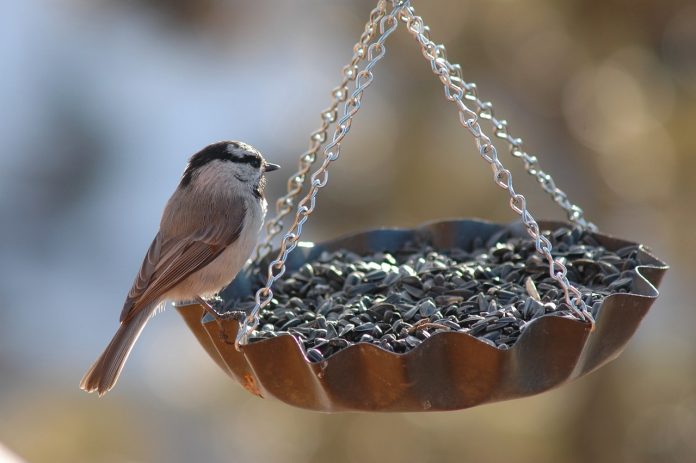Though it’s OK to feed wild birds year round, many people prefer to feed only during the colder months. The colder months are here, so let’s review the best foods to offer backyard birds.
Sunflower seeds
Black-oil sunflowers seeds are the best single food for wild birds.
These small, thin-shelled seeds are easy to open, rich in fat and protein and inexpensive. Virtually every bird that visits a backyard bird feeder eats black-oil seeds.
Striped sunflower seeds are larger and have thicker shells than oil seeds. They are favorites of cardinals, jays and woodpeckers, and can be cast on the ground or presented in tube or hopper style feeders.
Hulled sunflower seeds, which are also called sunflower kernels or sunflower chips, are ideal for most birds because they are pure food — no waste, no mess, no germination.
The extra step of removing the shells, however, increases the cost. Also, hulled sunflower seeds spoil quickly when wet, so they should be placed in a feeder that keeps them dry.
GoldCrest’s All-Weather Feeder is the only truly weather-proof feeder on the market, and it’s ideal for kernels.
Nyjer is the tiny, black, oil-rich seed that’s often erroneously called “thistle.” Finches love it, and doves and many native sparrows clean up the spillage beneath finch feeders.
Because it’s imported from Africa and Asia, it’s expensive.
Millet
Several varieties of millet include white proso, red, golden, German and Japanese. All are eaten by a variety of ground-feeding sparrows, game birds, and waterfowl, but most backyard birds prefer white proso millet.
One of millet’s best qualities is that its seed coat is hard enough to resist weathering, but not too hard for birds to crack.
Corn
Crows and game birds love whole corn. At backyard feeders whole corn also attracts jays and doves.
Unfortunately, it’s also a favorite of pigeons, grackles and squirrels. Cracked corn appeals to many backyard birds, but it carries some serious disadvantages.
It’s dusty, it spoils quickly when wet, and it attracts some undesirable birds.
Pigeons, starlings, house sparrows, cowbirds and grackles quickly find feeders filled with cracked corn, so use it sparingly if these birds are a problem.
Milo is often used as a filler seed in cheaper seed mixes. The seed shell is too hard for most birds to crack.
Wheat and oats are also common filler ingredients in cheap mixes. Read seed mix labels and avoid blends that contain cereal grains.
Melon seeds rival sunflower seeds in popularity with many birds. Save and dry watermelon, cantaloupe, squash, and pumpkin seeds and offer them as occasional treats.
Nuts
Walnuts, pecans and almonds are natural, nutritious, high-energy foods for woodpeckers, jays, chickadees, titmice and nuthatches.
Many seed packagers now offer mixes that include nuts, but they’re expensive. Peanuts are less expensive and provide an excellent source of protein and fat for nut lovers.
Suet is animal fat, and woodpeckers, chickadees, titmice and nuthatches love it. I prefer buying pure suet cakes, but those mixed with sunflowers seeds and nuts are great, too.
And for do-it-yourselfers, here’s my favorite suet recipe, courtesy of Martha Sargent, an avid Alabama birder. I’ve printed this recipe many times and get requests for it each fall.
Live food
Finally, for a treat birds cannot resist, offer live mealworms, the larval stage of harmless darkling beetles, on a shallow tray.
Woodpeckers, chickadees, titmice, nuthatches and even cardinals love them. Mealworms are most economically purchased from mail-order sources such as www.grubco.com and www.thenaturesway.com.
Better yet, buy a few thousand mealworms, then raise your own.















